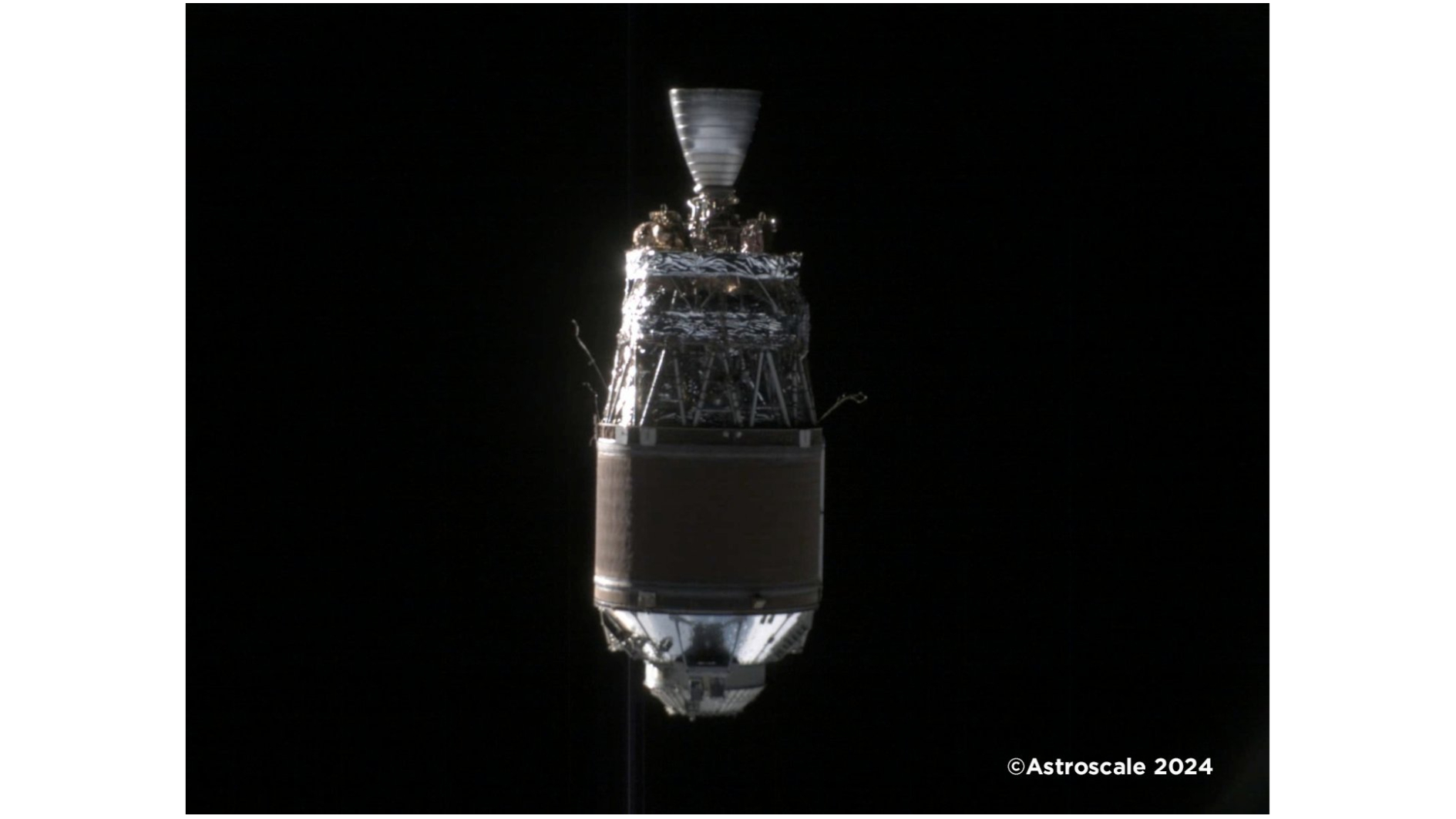
This is how decades-old space junk drifting in Earth's orbit would look like seen from just 50 meters (164 feet) away.
You are looking at the spent upper stage of a discarded Japanese rocket that launched an Earth observation satellite back in 2009. The rocket body was imaged up close on May 23 by the ADRAS-J satellite, which was designed by private Japanese company Astroscale to approach and study a non-communicative, uncontrollable piece of orbital debris.
Images and data collected during these inspections record the condition of the dead satellite, including how structurally intact it is after drifting in the harsh space environment for years. The satellite does not transmit GPS signals to Earth, so by closely approaching, imaging and potentially removing it from orbit in the future, ADRAS-J proves technologies that on-orbit services can be used for things like satellite maintenance or capturing and deorbiting space debris objects, according to Astroscale.
ADRAS-J, which is short for Active Debris Removal by Astroscale-Japan, launched into orbit atop Rocket Lab's Electron rocket on Feb. 18. By April the 330-pound (150-kilogram) probe had used its onboard cameras and successfully maneuvered within a few hundred meters of its target — the upper stage of the Japanese H-2A rocket that launched the GOSAT Earth-observation satellite back in 2009. This striking photo released late April memorialized the achievement.
Related: Wow! Private space-junk probe snaps historic photo of discarded rocket in orbit
In an update posted today (Friday, June 14), Astroscale wrote that ADRAS-J had completed a safe and controlled approach to the rocket, which spans 36 feet long by 13 feet wide (11 by 4 meters). The latest image is one of many ADRAS-J captured while holding a fixed position relative to the upper stage, the company said, adding that the mission will soon try snapping additional pictures of the target through various close approach operations.
Spaceflight historian Gunther Krebs previously noted that ADRAS-J is not the first mission to capture close-up images of space junk. In 2003, the U.S. Air Force Research Laboratory's XSS-10 satellite had photographed the used upper stage of a Delta II rocket; those tasks were less complex than ADRAS-J's.
Following the successful safe and controlled approach of the dead rocket, in late April, the Japan Aerospace Exploration Agency (JAXA) chose Astroscale for the second phase of the mission, which will progress onto capturing and removing the rocket body using a robotic arm that is lighter version of the one on the International Space Station.
"This next phase holds significance in addressing the space debris issue and laying the foundation for a sustainable environment for future generations," Eddie Kato, the president of Astroscale Japan, said in a previous statement.







